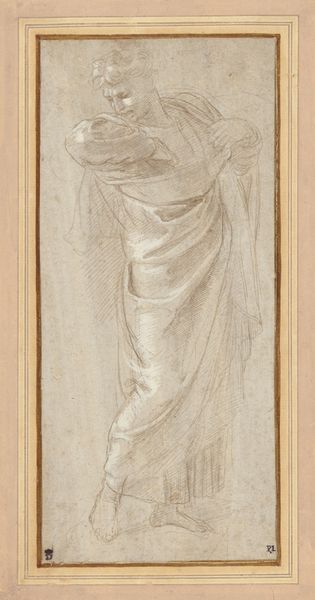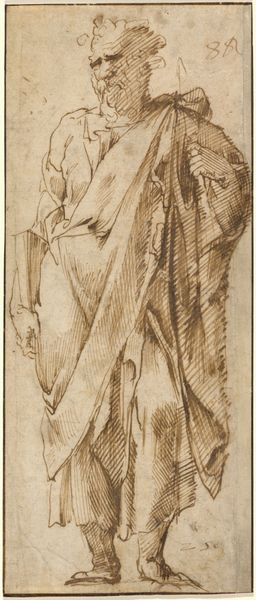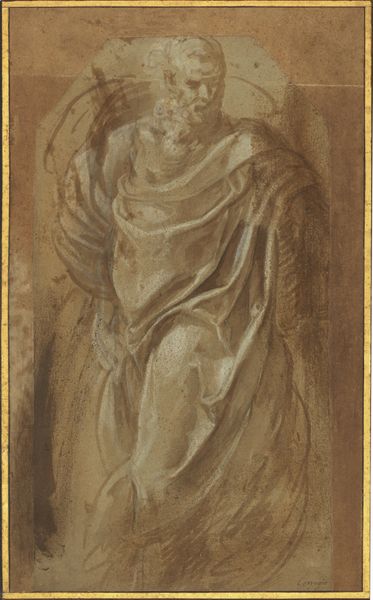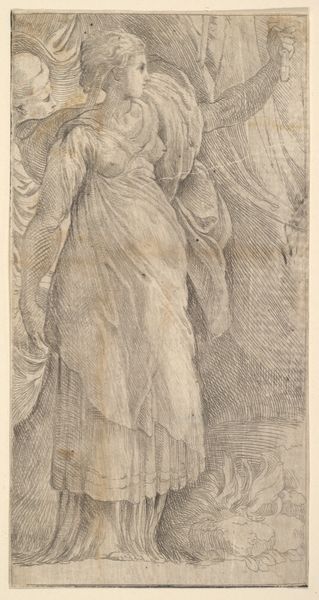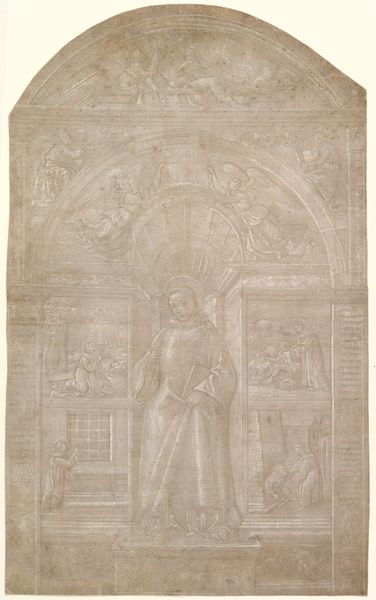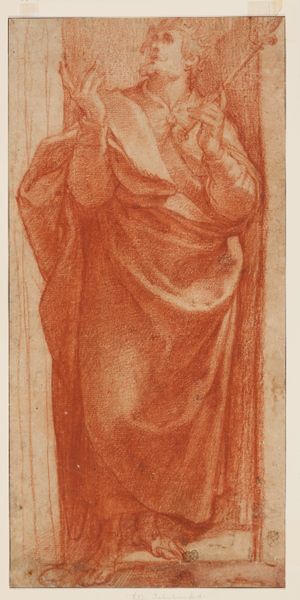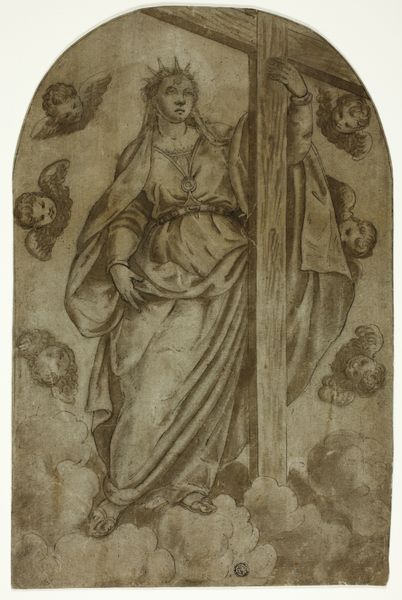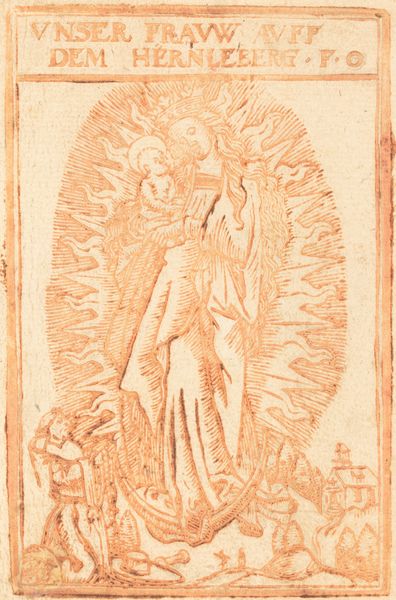
drawing, charcoal
#
portrait
#
drawing
#
charcoal drawing
#
figuration
#
charcoal
#
italian-renaissance
#
early-renaissance
Dimensions: overall: 19.4 x 8 cm (7 5/8 x 3 1/8 in.)
Copyright: National Gallery of Art: CC0 1.0
Editor: We’re looking at "Standing Woman with Her Hands Clasped in Prayer," a charcoal drawing by Filippino Lippi, created around 1488. The shading gives the figure an ethereal quality. What strikes you about it? Curator: The emphasis for me is on the *making* here. It's not about a grand, finished product, but about process. Lippi chose charcoal, a humble, easily worked material. Consider the societal value placed on drawing versus painting at the time, or the rough quality of the strokes visible throughout the piece; they point to the physical labor involved in art production, stripping away some of the romanticism often associated with Renaissance art. Editor: So, the material itself shifts the way we understand the piece? I'd have initially looked for some deep, religious symbolism! Curator: Exactly. Charcoal also wasn’t a hugely costly medium compared to other materials that would have been available at the time. How does the choice of charcoal, a material so readily accessible, possibly intended for preliminary study, complicate our understanding of artistic "genius" and the hierarchies within artistic practice? Editor: I see what you mean. Thinking about the materials pushes against the idea of the artist as some divinely inspired being, working with precious materials for wealthy patrons. Curator: Right. Lippi isn’t necessarily trying to portray an immaculate, idealised woman in prayer here, but rather capturing a stage of her artistic representation. He highlights a single element in that representational pathway: the figure emerges out of labor. That act of making then informs the final reading. Editor: That’s a different way to consider art history - the *how* rather than the *who* or *what*. Thanks! Curator: Precisely. Hopefully that's helped reveal some hidden narratives, embedded within seemingly simple choices.
Comments
No comments
Be the first to comment and join the conversation on the ultimate creative platform.
